Idea by
Maxrey Bolando
Call for ideas 2019
Pearl of the Orient
Pearl of the Orient
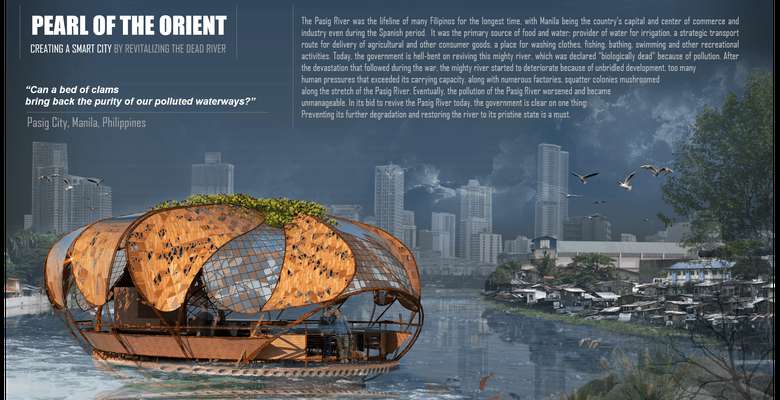
- Site-specific cases
The Pasig River was the lifeline of many Filipinos for the longest time, with Manila being the country’s capital and center of commerce and industry even during the Spanish period. It was the primary source of food and water and a center for civic and recreational activities. The mighty river started to deteriorate because of unbridled development, too many human pressures that exceeded its carrying capacity, along with numerous factories, squatter colonies mushroomed along the stretch of the Pasig River. Today, the government is hell-bent on reviving this mighty river, which was declared “biologically dead” because of pollution.

“Can a bed of clams bring back the purity of our polluted waterways?” This Biomimicry of clams is a bottom-up development that is intended to stimulate both environmental and social awareness to the people and the government about the importance of Pasig River as a source of life to take part on transforming the river to become a hub for commerce, tourism and culture.
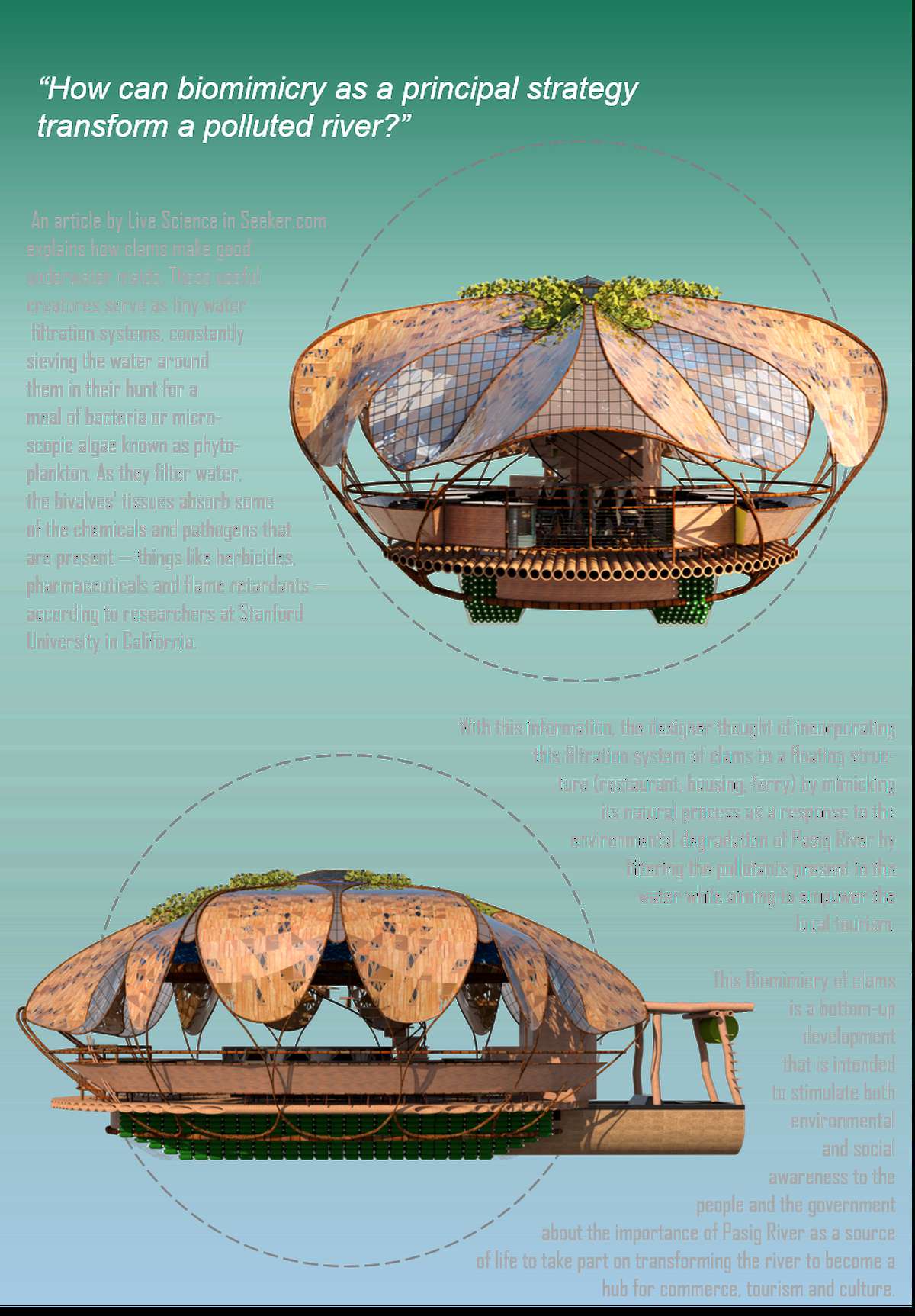
The form of the structure has been conceived by the need to create a distinctive design of a structure that emerges naturally from the water and fits the local tradition.

The design combines various elements that aims to reduce carbon footprint by using local sustainable materials.
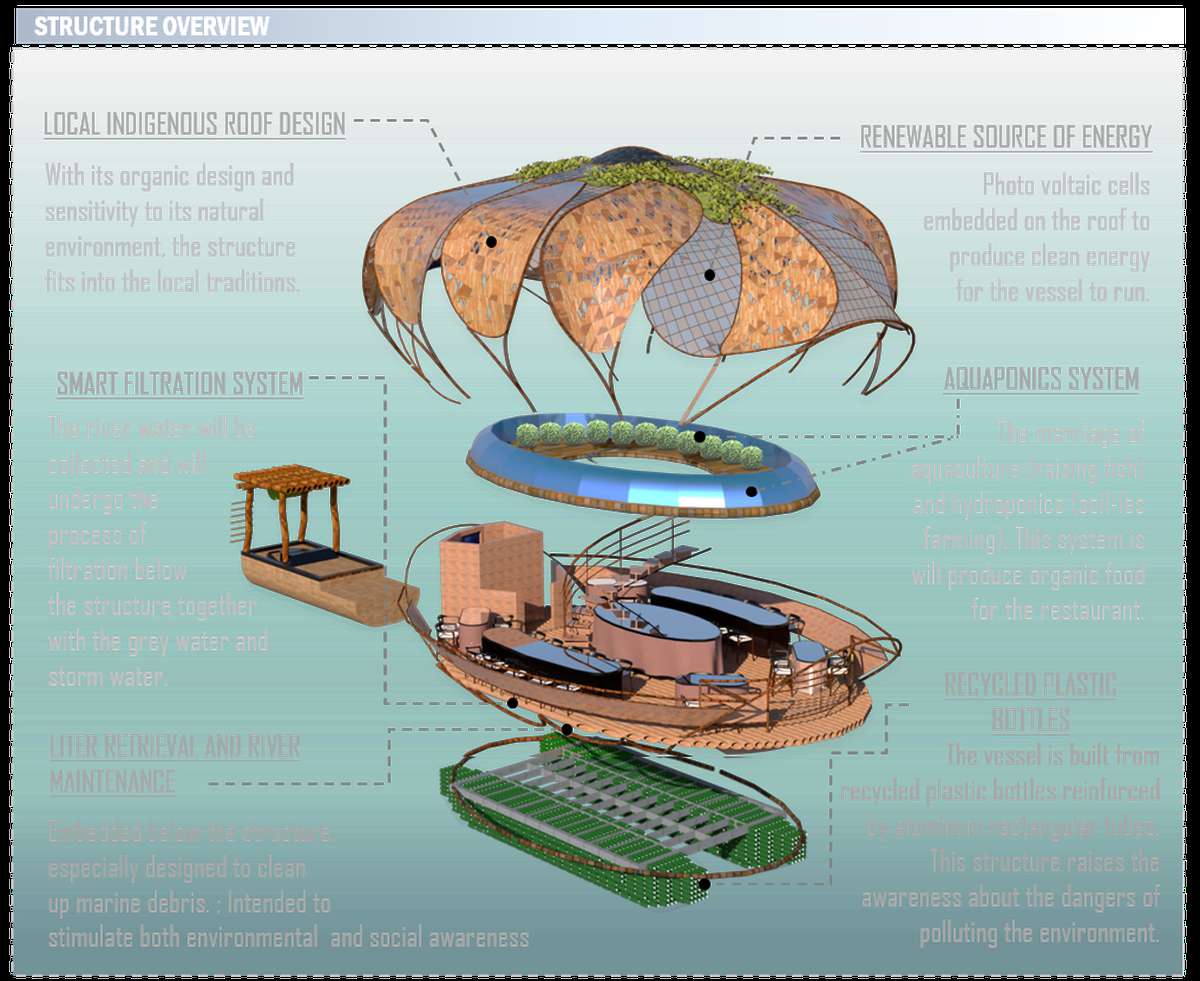
Various conceptual system will be implemented on the design to achieve the goal of sustainable design, minimalizing water excess, maximizing natural sources of energy through photo voltaic cells, and aquaponics system that will encourage farm-table food system.
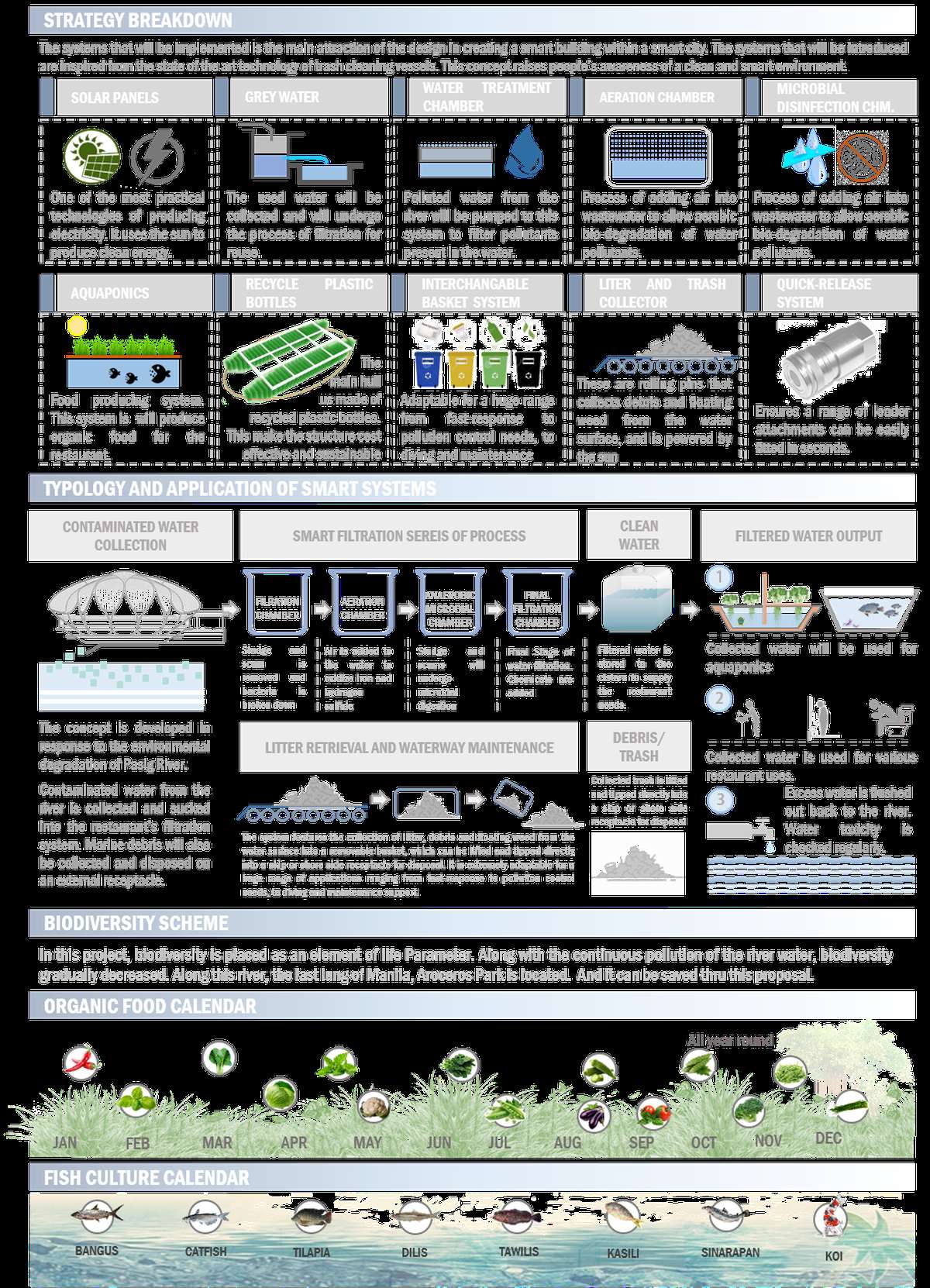
The design is a combination of various filtration system and technology:
Filtration Chamber: Sludge and scum is removed and bacteria is broken down.
Aeration Chamber: Air is added to the water to oxidize iron and hydrogen sulfide.
Anaerobic Microbial Chamber: Sludge and scums will undergo microbial digestion.
Final Treatment Chamber: Final Stage of water filtration. Chemicals are added.
Litter and Trash Collection.: Features the collection of litter, debris and floating weed
Pearl of the Orient
Pearl of the Orient

- Site-specific cases
The Pasig River was the lifeline of many Filipinos for the longest time, with Manila being the country’s capital and center of commerce and industry even during the Spanish period. It was the primary source of food and water and a center for civic and recreational activities. The mighty river started to deteriorate because of unbridled development, too many human pressures that exceeded its carrying capacity, along with numerous factories, squatter colonies mushroomed along the stretch of the Pasig River. Today, the government is hell-bent on reviving this mighty river, which was declared “biologically dead” because of pollution.
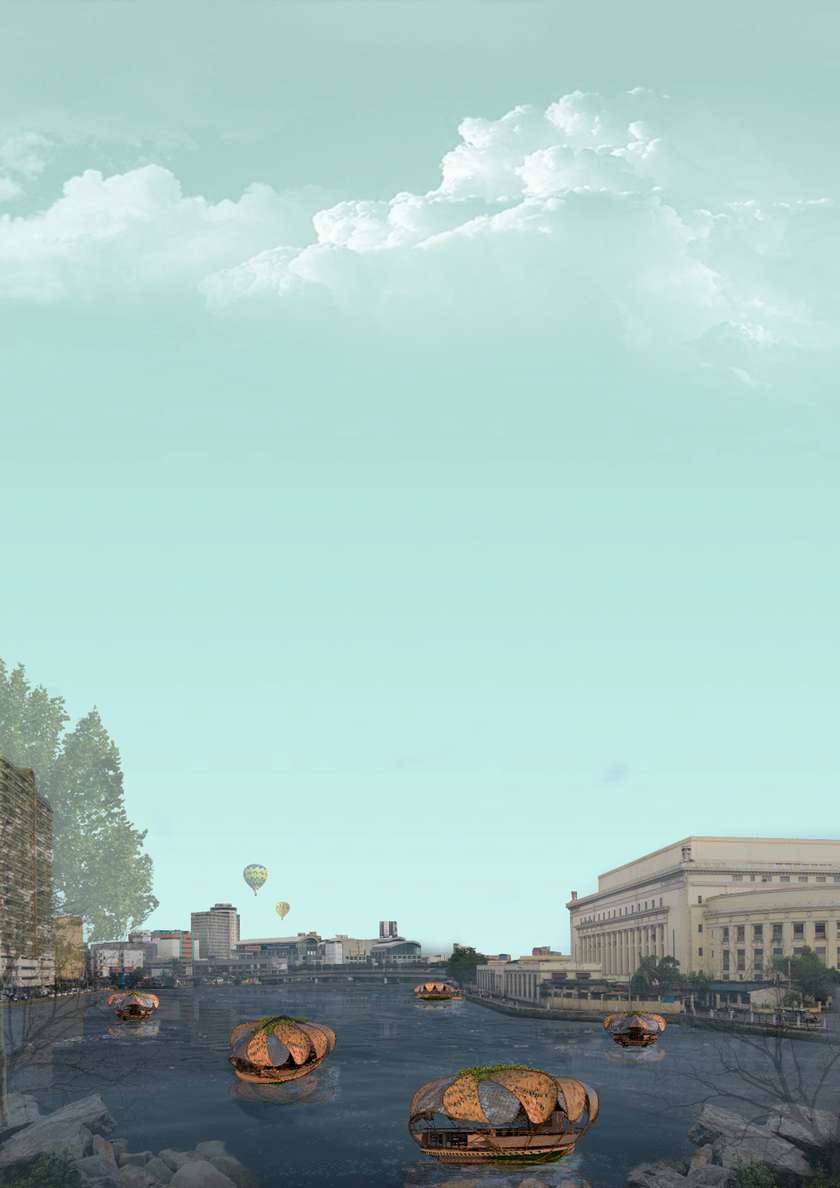
“Can a bed of clams bring back the purity of our polluted waterways?” This Biomimicry of clams is a bottom-up development that is intended to stimulate both environmental and social awareness to the people and the government about the importance of Pasig River as a source of life to take part on transforming the river to become a hub for commerce, tourism and culture.
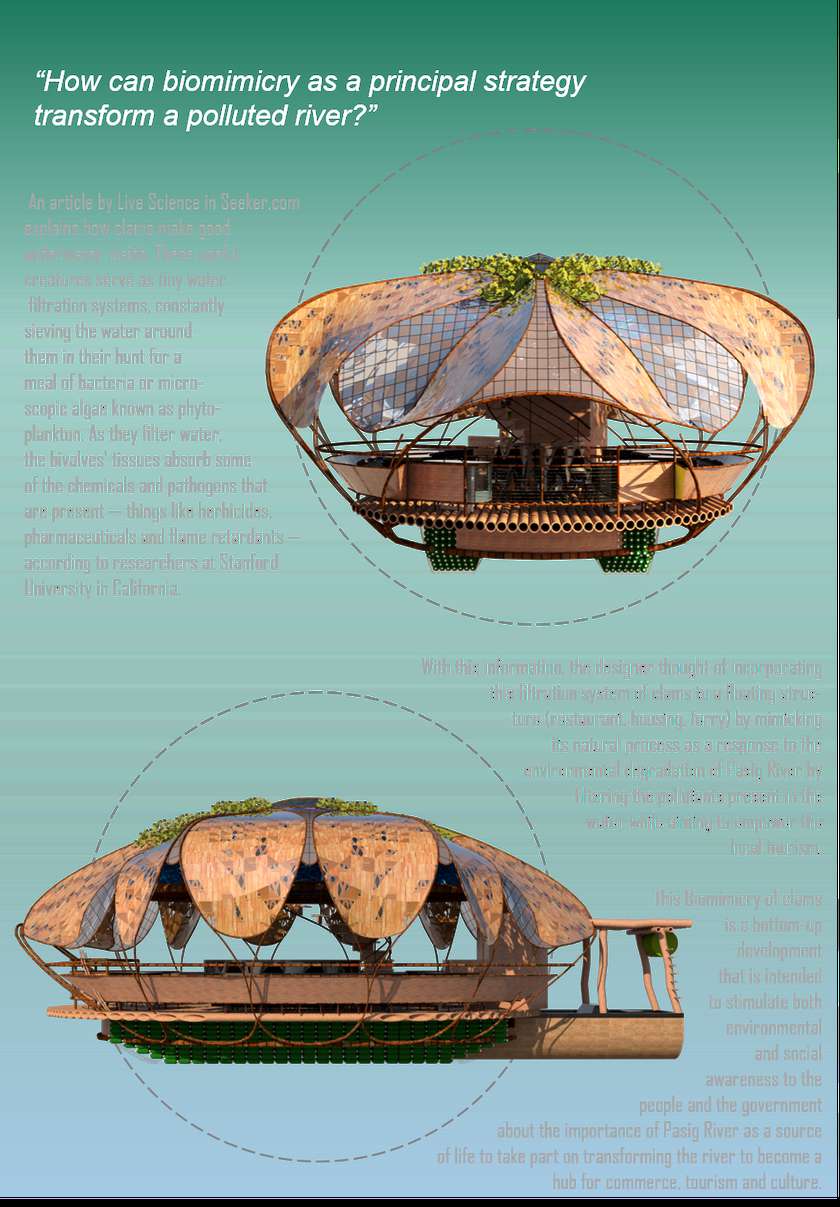
The form of the structure has been conceived by the need to create a distinctive design of a structure that emerges naturally from the water and fits the local tradition.

The design combines various elements that aims to reduce carbon footprint by using local sustainable materials.
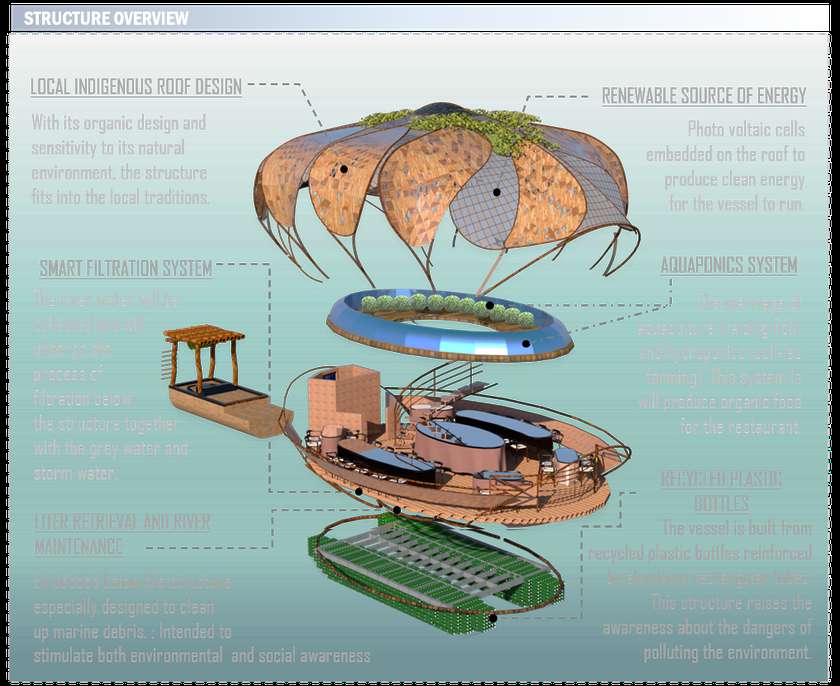
Various conceptual system will be implemented on the design to achieve the goal of sustainable design, minimalizing water excess, maximizing natural sources of energy through photo voltaic cells, and aquaponics system that will encourage farm-table food system.
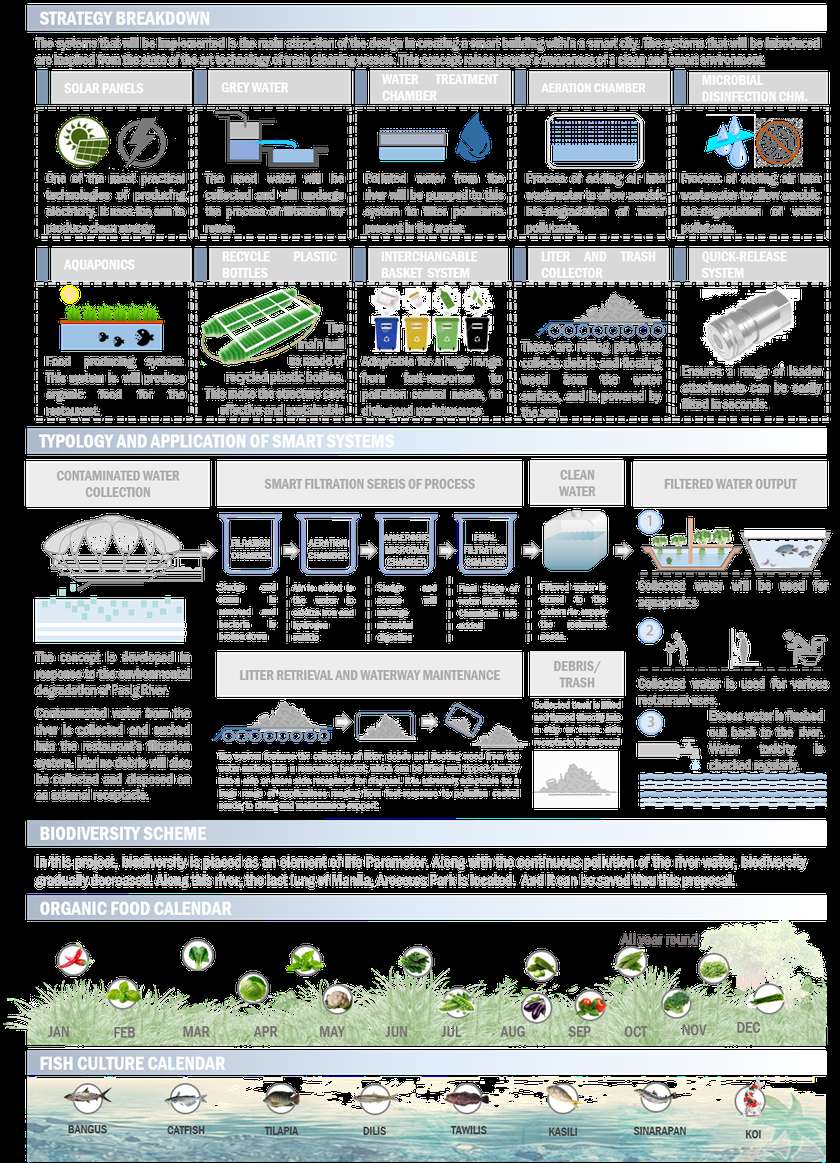
The design is a combination of various filtration system and technology:
Filtration Chamber: Sludge and scum is removed and bacteria is broken down.
Aeration Chamber: Air is added to the water to oxidize iron and hydrogen sulfide.
Anaerobic Microbial Chamber: Sludge and scums will undergo microbial digestion.
Final Treatment Chamber: Final Stage of water filtration. Chemicals are added.
Litter and Trash Collection.: Features the collection of litter, debris and floating weed